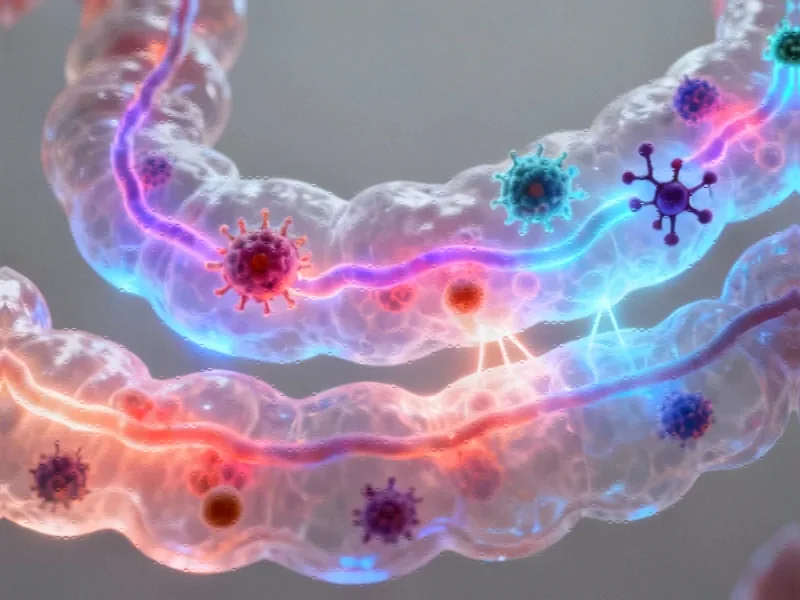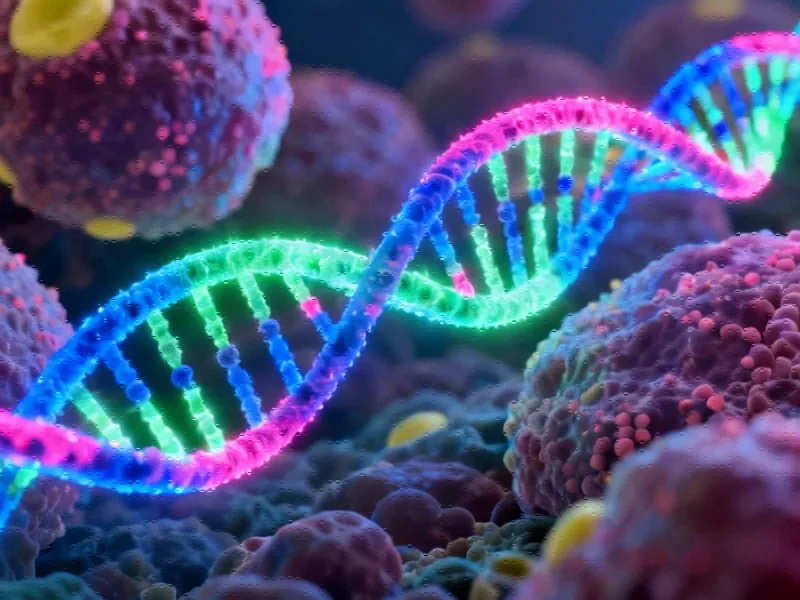Novel Animal Model Uncovers Mechanistic Insights
Researchers have developed a groundbreaking conditional knock-in mouse model that faithfully recapitulates NLRC4-associated autoinflammation and infantile enterocolitis (AIFEC), a rare but devastating inflammatory condition. The model, which carries a loxP-flanked V341A mutation in the endogenous Nlrc4 locus, demonstrates that global expression of this mutant allele reproduces key disease features including early-onset enterocolitis and systemic autoinflammation. This advancement represents a significant step forward in understanding this complex disorder and opens new avenues for therapeutic development. The creation of this model comes at a time when related innovations in disease modeling are transforming our approach to rare diseases.
Precision Genetic Engineering Reveals Disease Mechanisms
The research team employed sophisticated genetic engineering techniques to replace the coding sequence of exon 2 with a Cre-dependent expression cassette containing the V341A mutation. Through breeding with E2a-Cre transgenic mice, they achieved germline transmission of the mutant allele. Comprehensive validation confirmed that NLRC4 V341A expression in knock-in mice mirrored endogenous levels while exhibiting characteristic inflammasome hyperactivation. This technical achievement demonstrates how precision genetic tools are advancing our understanding of complex diseases, reflecting broader industry developments in biomedical research.
Systemic Autoinflammation and Multi-Organ Damage
The NLRC4 knock-in mice displayed severe systemic autoinflammation resembling macrophage activation syndrome (MAS), with profoundly stunted growth and high mortality within 10 days postnatal. Biochemical analysis revealed elevated markers of liver damage (AST, ALT), kidney impairment (BUN, uric acid), and cardiac/muscle injury (creatine kinase). Notably, researchers observed marked hypoglycemia despite normal protein and albumin levels, suggesting metabolic dysregulation rather than nutritional deficiency. These findings highlight the systemic nature of NLRC4 inflammasomeopathies and their impact on multiple organ systems, occurring alongside significant market trends in metabolic disorder research.
Gastrointestinal Pathology Mirrors Human Disease
The mouse model faithfully reproduced the infantile enterocolitis characteristic of AIFEC, demonstrating villous blunting, epithelial damage, and increased inflammatory cell infiltration in the lamina propria. Flow cytometric analysis revealed altered immune cell populations with increased macrophages and neutrophils alongside decreased T cells. The mice exhibited clinical symptoms including enlarged colons, increased colon weight, and severe diarrhea. These gastrointestinal manifestations closely parallel those observed in human patients, providing a robust platform for investigating intestinal inflammation mechanisms and potential interventions.
Unexpected Therapeutic Strategies Emerge
Perhaps most remarkably, the study identified multiple promising therapeutic approaches. Pharmacologic blockade of both IL-18 and TNF effectively ameliorated disease phenotypes, validating these cytokines as therapeutic targets. Surprisingly, glucose supplementation emerged as an unexpected yet effective strategy, potentially addressing the observed hypoglycemia and metabolic dysregulation. This dual-pronged approach—targeting both inflammatory pathways and metabolic abnormalities—represents a novel therapeutic paradigm that could transform treatment strategies for NLRC4-associated diseases and other inflammasomeopathies.
Technical Validation and Model Specificity
The researchers conducted rigorous controls to ensure that the observed phenotype resulted specifically from the NLRC4 V341A mutation rather than technical artifacts. By generating NLRC4 V341A mice lacking E2aCre, they confirmed that the disease pathology was independent of Cre-mediated effects. Heterozygous mice displayed only mild symptoms, suggesting a gene dosage effect in this model system. These careful controls strengthen the model’s validity and ensure that observed phenotypes accurately reflect NLRC4-driven pathology, an important consideration given the complex recent technology infrastructure supporting modern genetic research.
Cellular Mechanisms and Tissue-Specific Effects
Detailed cellular analysis revealed significant alterations in intestinal epithelium, including dramatic reduction of mucus-producing goblet cells and Paneth cells. TUNEL assays demonstrated extensive cell death in knock-in tissue, while Western blot analysis confirmed pyroptosis through GSDMD cleavage in intestinal epithelial cells. These findings provide mechanistic insight into how NLRC4 hyperactivation drives tissue damage and barrier dysfunction in the gastrointestinal tract, potentially explaining the severe enterocolitis observed in patients.
Implications for Precision Medicine and Future Research
This physiologically relevant model of NLRC4 inflammasomeopathy offers unprecedented opportunities for preclinical therapeutic testing and mechanistic investigation. The identification of both cytokine-targeted approaches and metabolic interventions suggests combination therapies might provide optimal efficacy. Furthermore, the model’s fidelity to human disease characteristics makes it particularly valuable for translating basic research findings into clinical applications, potentially accelerating development of targeted treatments for patients suffering from this devastating condition.
Research Significance: This study not only provides crucial insights into NLRC4-associated autoinflammation but also establishes a platform for evaluating novel therapeutic strategies that could benefit patients with related inflammasome disorders.
This article aggregates information from publicly available sources. All trademarks and copyrights belong to their respective owners.
Note: Featured image is for illustrative purposes only and does not represent any specific product, service, or entity mentioned in this article.



